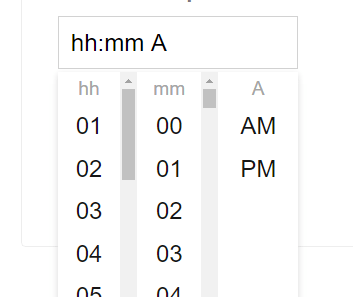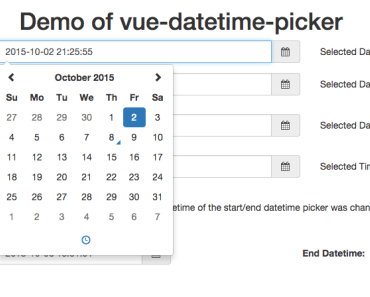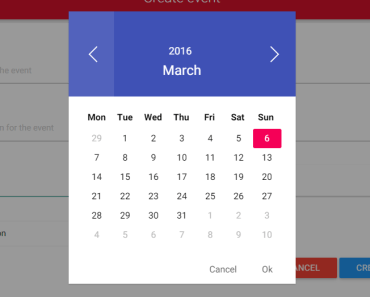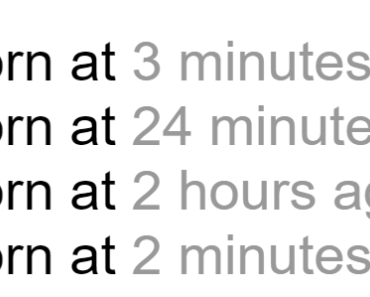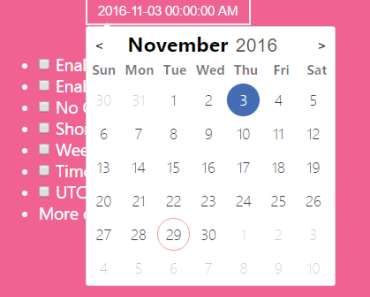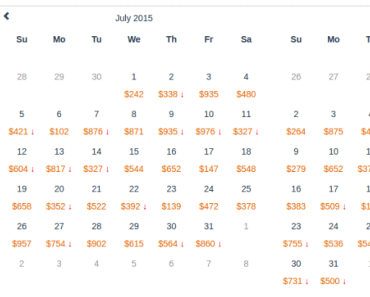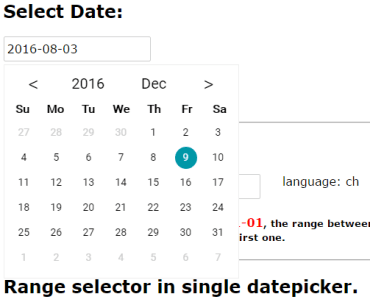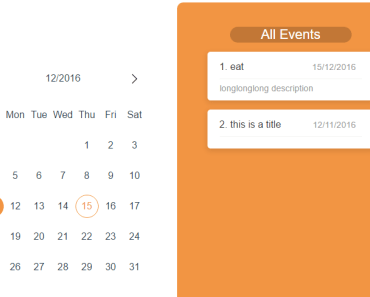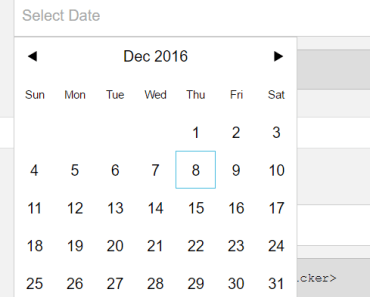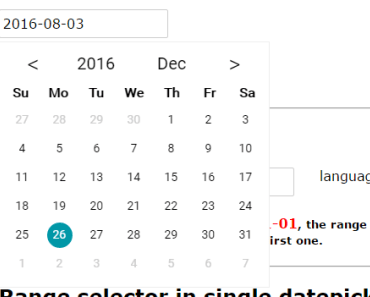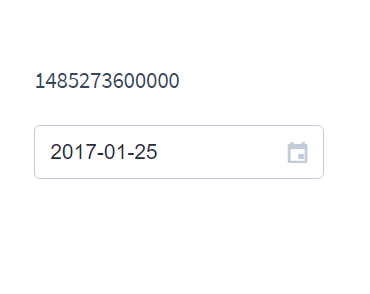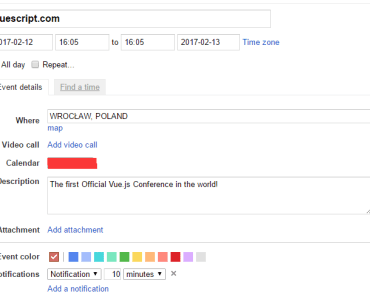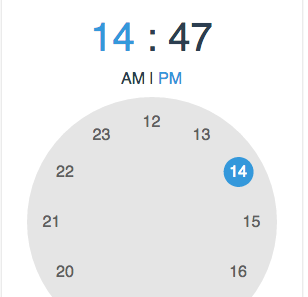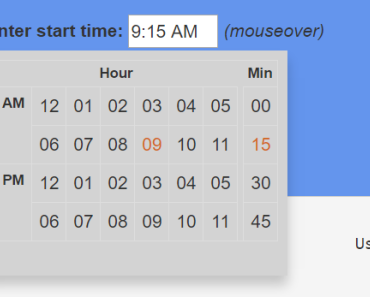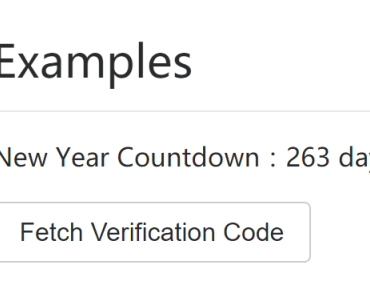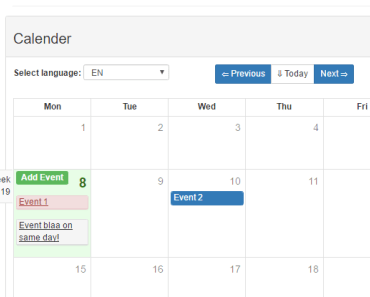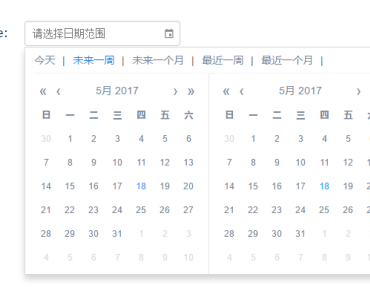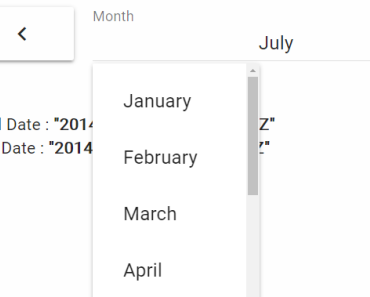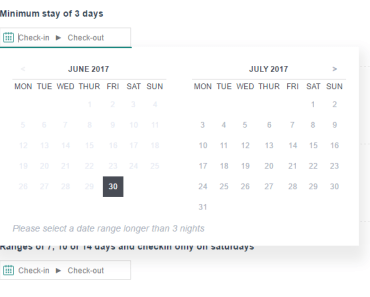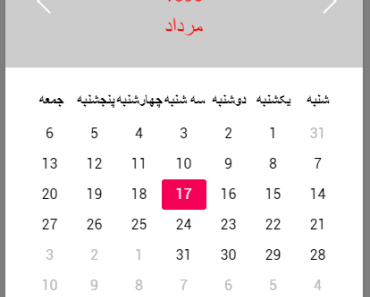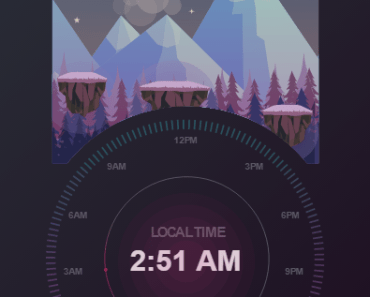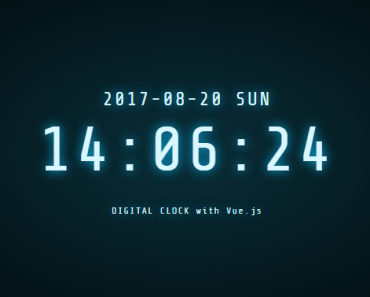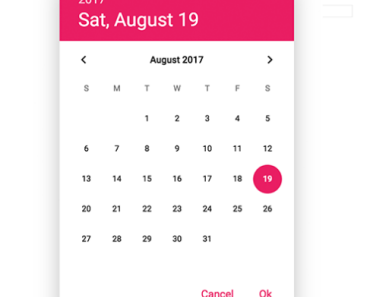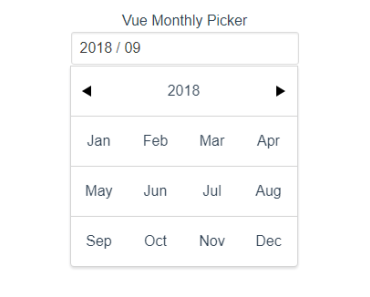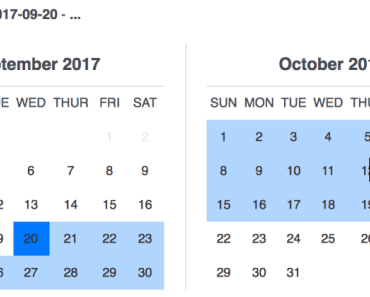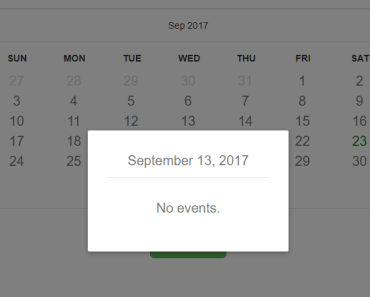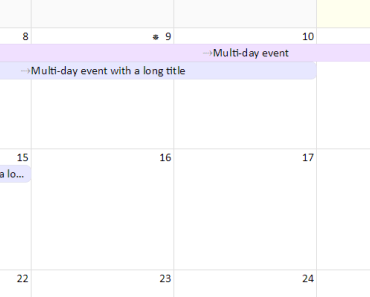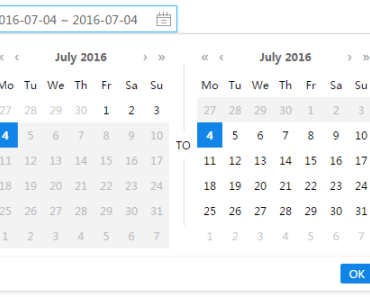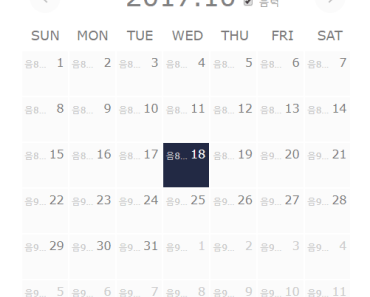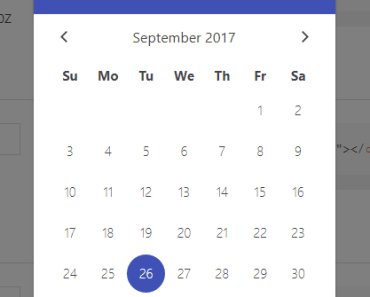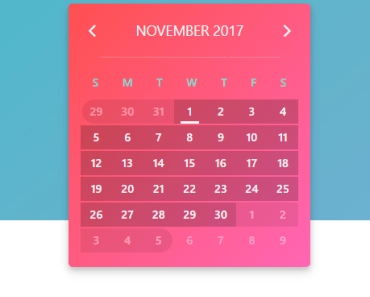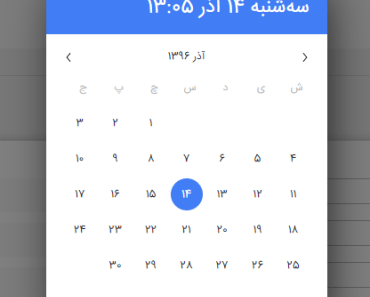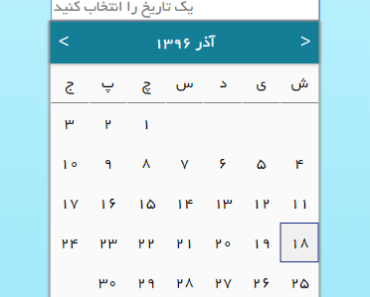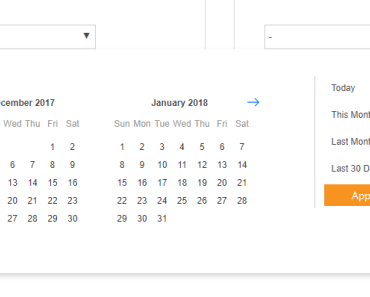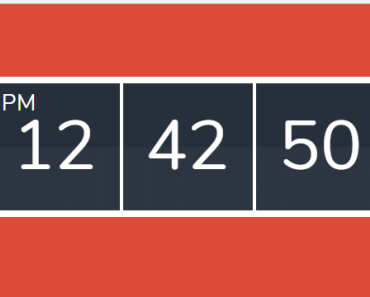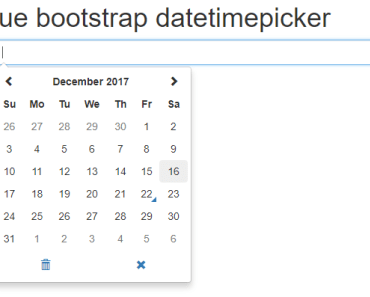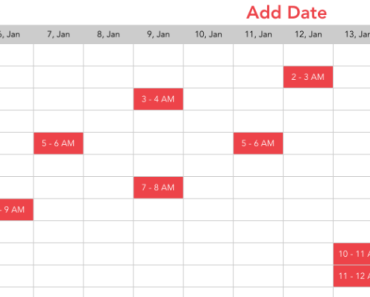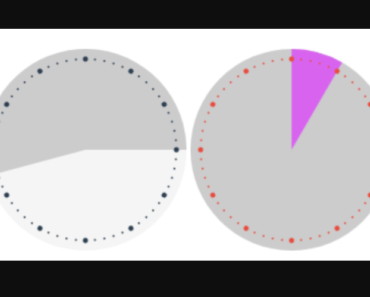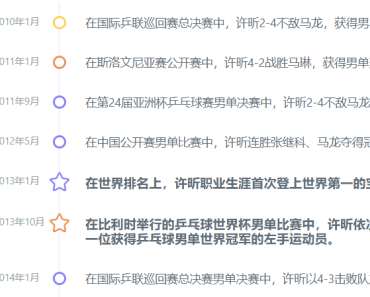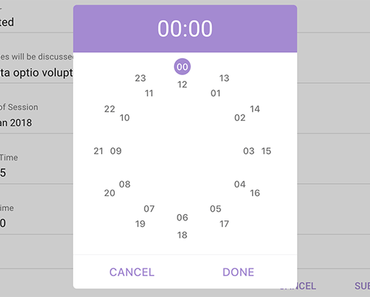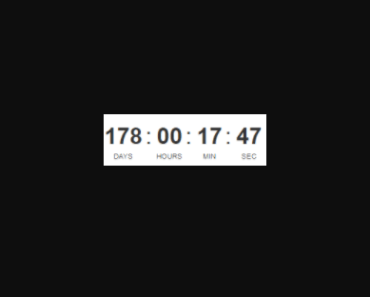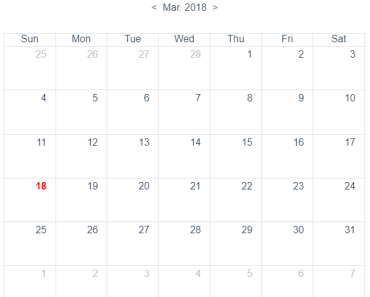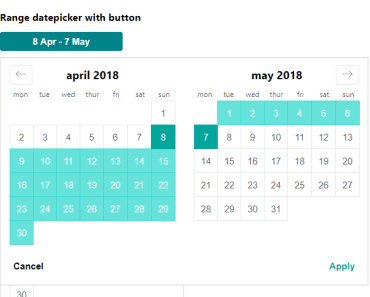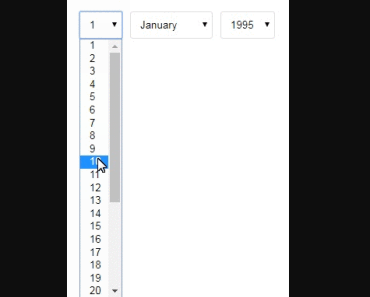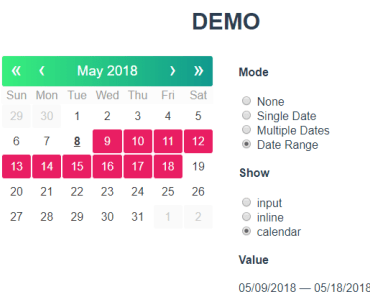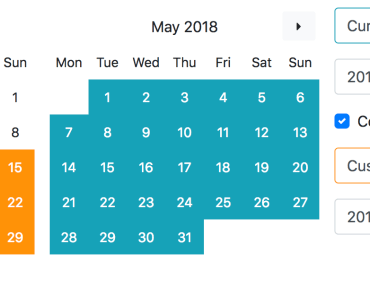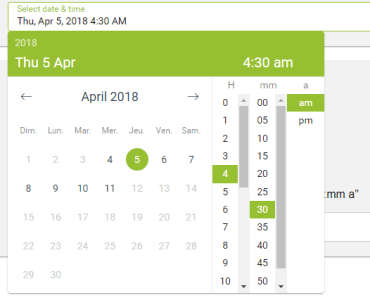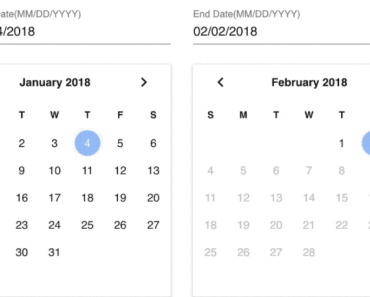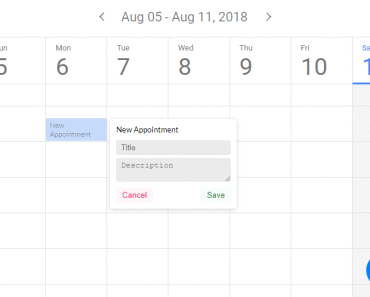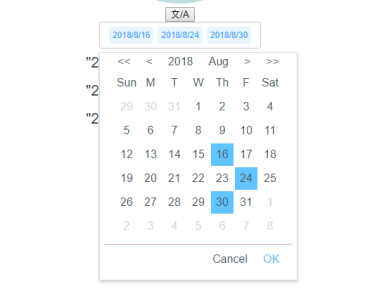Vue2 Time Picker
A dropdown time picker (hour|minute|second) for Vue 2.x, with flexible time format support.
Looking for the Vue 1.x version? Please check the vue-timepicker (Vue 1.x supported)
Demo
You can see the Vue2 Timepicker in action in the Demo Page
Migration
Migrating from the Vue 1.x version? Please check MIGRATION.md for basic guidelines.
Dependencies
Vue.js v2.0+
Installation
Through NPM (Recommended)
npm install vue2-timepicker --saveBower
bower install vue2-timepicker --saveGet Started
Step 1: Import VueTimepicker
A: Include the single file component (Recommended)
// import import VueTimepicker from 'vue2-timepicker' // Or, require var VueTimepicker = require('vue2-timepicker') or, B: Include distribution files with <script> and <style>
<script src="yourpath/vue/dist/vue.min.js"></script> <script src="yourpath/vue2-timepicker/dist/vue2-timepicker.min.js"></script> <link href="yourpath/vue2-timepicker/dist/vue2-timepicker.min.css" rel="stylesheet"></link>NOTE: When using the dist files, a Vue.use() call is needed
// Work with <script> block Vue.use(window.VueTimepicker) // Else Vue.use(VueTimepicker)Step 2: Include VueTimepicker in your component
var yourComponent = new Vue({ components: { VueTimepicker }, ... })Step 3: Then, you can introduce the vue-timepicker tag anywhere you like in your component's template
<vue-timepicker></vue-timepicker>Usage
Basic Usage
<!-- Default to 24-Hour format HH:mm --> <vue-timepicker></vue-timepicker>Customized Time Format
<!-- Show seconds picker --> <vue-timepicker format="HH:mm:ss"></vue-timepicker> <!-- 12-hour format, with AM/PM picker --> <vue-timepicker format="hh:mm A"></vue-timepicker> <!-- 12-hour format, with seconds picker and am/pm picker --> <vue-timepicker format="hh:mm:ss a"></vue-timepicker>VueTimepicker will recognizes the following tokens in the format string
| Section | Token | Output |
|---|---|---|
| AM/PM | A | AM PM |
| a | am pm Hour | H | 0 1 ... 22 23 | HH | 00 01 ... 22 23 | h | 1 2 ... 11 12 | hh | 01 02 ... 11 12 | k | 1 2 ... 23 24 | kk | 01 02 ... 23 24 Minute | m | 0 1 ... 58 59 | mm | 00 01 ... 58 59 Second | s | 0 1 ... 58 59 | ss | 00 01 ... 58 59
If not set,
formatstring will be default to "HH:mm"
Customized Picker interval
<!-- Show minute picker's value in the form of 0, 5, 10, ... 55, 60 --> <vue-timepicker :minute-interval="5"></vue-timepicker> <!-- Show second picker's value in the form of 0, 10, 20, ... 50, 60 --> <vue-timepicker :second-interval="10"></vue-timepicker> <!-- Bind interval config with your own data variable --> <vue-timepicker :minute-interval="yourMinuteInterval"></vue-timepicker>Note: Please do remember to add the : or v-bind: sign before the interval properties
Hide Clear Button
<vue-timepicker hide-clear-button></vue-timepicker>Bind Value with v-model
// e.g. If you want to assign "10:05:00" as the initial value of vue-timepicker var yourComponent = new Vue({ components: { VueTimepicker }, data: function () { return { yourTimeValue: { HH: "10", mm: "05", ss: "00" }, ... } }, ... })<!-- HTML --> <vue-timepicker v-model="yourTimeValue" format="HH:mm:ss"></vue-timepicker>Get Time Picker's Current Value
Method 1: Read value from v-model
<!-- In the last section, we've set the initial value (yourTimeValue) to "10:05:00" --> <vue-timepicker v-model="yourTimeValue" format="HH:mm:ss"></vue-timepicker>// Then, open the dropdown picker and pick a new time. // Like setting to "14:30:15" for example // Check the value after that console.log(this.yourTimeValue) // outputs -> {HH: "14", mm: "30", ss: "15"}Method 2: Add @change event handler
<!-- A: No argument --> <vue-timepicker :time-value.sync="yourTimeValue" @change="changeHandler"></vue-timepicker> <!-- B: Custom arguments --> <vue-timepicker :time-value.sync="yourTimeValue" @change="otherChangeHandler($event, 'foo', 'bar')"></vue-timepicker>// A: No argument changeHandler (eventData) { console.log(eventData) // -> {data: {HH:..., mm:... }} } // B: Custom arguments otherChangeHandler (eventData, yourArg1, yourArg2) { console.log(eventData) // -> {data: {HH:..., mm:... }} console.log(yourArg1) // -> 'foo' console.log(yourArg2) // -> 'bar' }Unlike v-model, which only returns the defined time tokens you provided in the binding variable, the change event will return all supported formats.
In the example above, when picker is set to "14:30:15" in HH:mm:ss format, change event will return the following data:
// `@change` event data { HH: "14", H: "14", hh: "14", a: "am", A: "AM", h: "14", kk: "14", k: "14", m: "30", mm: "30", s: "15", ss: "15" }Whereas the v-model will only return the data with defined tokens
// Previously defined variable (`yourTimeValue` in this case) as {HH:..., mm:..., ss:...} // Hence, the `v-model` returns: { HH: "14", mm: "30", ss: "15" }Props API
| Prop | Type | Required | Default Value |
|---|---|---|---|
| v-model | Object | no | undefined |
| format | String | no | "HH:mm" |
| minute-interval | Number | no | undefined |
| second-interval | Number | no | undefined |
| hide-clear-button | Boolean | no | false |
Contribution
Please feel free to fork and help developing.
# install dependencies npm install # serve with hot reload at localhost:8080 npm run devFor detailed explanation on how things work, checkout the webpack guide and docs for vue-loader.
Change Log
Detail changes for each release are documented in CHANGELOG.md
